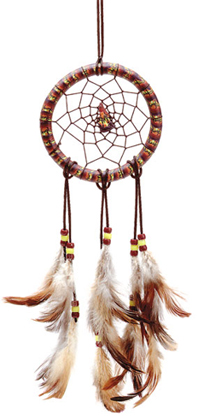Benjamin drew comfort from her dream catcher. These days, though, she shakes her head to see them worn as earrings, hanging from car windshields and even sold as key chains in convenience stores.
"It has gotten out of hand. It's disrespectful for our people. It means something to us, it's a tradition," said Benjamin, a member of the Mille Lacs Band of Ojibwe.
A dream catcher is supposed to be made in intricate, ceremonial steps that include giving thanks for the spirit of the wood used in it. Those steps fall by the wayside when a person buys a make-it-yourself kit from a discount store, says Gerald White, a member of the Leech Lake Band of Ojibwe.
"The dream catcher, to us, is a sacred item," White said. "It's lost a lot of meaning, even in our own tribe. It's like losing our language, our culture--another symptom of a larger thing."
On the other hand, I question labeling everything attached to a Native belief "sacred." Is every bell, book, and candle in a Christian church sacred? I don't think so.
Native artists make kachina dolls, sand paintings, and totem poles as well as dreamcatchers for sale. Are these objects sacred if they're made to be sold? Can a sacred object become non-sacred in a secular context?
For more on the subject, see Dreamcatcher = Healing at Stanford and Dreamcatchers for Jill Biden.


Some thoughts:
ReplyDeleteShould dreamcatchers only be made by Ojibwa? That ship sailed a long time ago.
I think it's a shame to see machine-made dreamcatchers, especially if they're made by non-native companies.
I have a few dozen dreamcatchers made by members of several tribes. The best are works of art, something unique crafted with and influenced by the artist's personal style. Like many native artists, the best bring something personal and modern to traditional artforms.